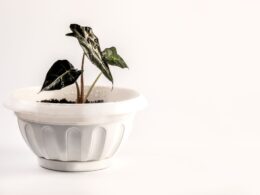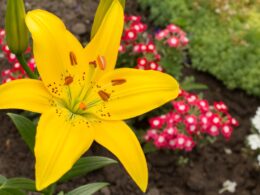In this article, we’ll provide you with tips on how to plant these beautiful blooms and when is the best time to do so. So don’t wait any longer – find out when to plant black eyed Susans and start planting.
When to Plant Black Eyed Susans?
Black-eyed Susans are one of the most popular flowers in the United States. They are often planted in gardens and used as decorations in homes. Many people also enjoy growing them in their yards.
The best time to plant black-eyed Susans is in the spring or fall. If you plant them in the spring, the bloom time will be in the summer. If you plant them in the fall, they will bloom in the spring. So, when to plant black eyed Susans? Spring or fall, but be sure that the soil temperature is warm enough.
You can also plant black-eyed Susans indoors. Be sure that the last frost has passed before planting them outdoors.
When to Plant Black Eyed Susans in Your Region?
If you’re wondering when to plant black-eyed Susans in your region, the answer may vary depending on where you live. In general, it’s best to plant them in early spring or late fall. However, if you live in a warmer climate, you can plant them anytime between late spring and early summer. Keep in mind that they may not bloom as profusely in the heat of summer.
Black-Eyed Susans (Rudbeckia hirta) – Morphology
You know when to plant black eyed Susans. Now let’s find out more about this species. The black-eyed Susan (Rudbeckia hirta) is a member of the Asteraceae, or sunflower, family. The plant gets its name from the dark brown or black center of its flower head. Black-eyed Susans are annuals (sometimes biennials or perennials), meaning they live for one growing season and then die.
The plant grows to be about 2 or 3 feet tall and has a slender, hairy stem. The leaves are lance-shaped and arranged in pairs along the stem. The flower heads are daisy-like, about two inches wide and have yellow petals with a black or brown center.
Black-eyed Susans grow in sunny areas with well-drained soil. These flowers are native to North America and can be found in meadows, prairies, and roadsides as a wildflower. The plant blooms from June to September.
The black-eyed Susan is the state flower of Maryland. It is also the official flower of the City of Philadelphia.
How to Plant Black Eyed Susans?
When you are ready to plant your black-eyed Susans, make sure that you have a sunny spot or partial shade in your yard or garden. They do not need a lot of space, but they do need a lot of sun. You will also need to make sure that the soil is well-drained.
Once you have found the perfect spot for your black-eyed Susans, you will need to dig a hole that is large enough for the roots of the plant. The depth of the hole should be about twice the width of the pot that the plant came in.
After you have dug the hole, you will need to add some compost or manure to the bottom of it. This will help the plant to get the nutrients that it needs. Once you have added the compost, you will need to water the plant well. You should do this every day for the first week or so. After that, you can reduce the amount of water that you give it.
Black Eyed Susan’s Seeds
Black Eyed Susans are beautiful and easy to grow, making them a great choice for beginning gardeners. The seeds are small and black, hence the name. They germinate easily and quickly, so you can have blooms in as little as two weeks after planting!
To sow black-eyed Susan seeds, simply scatter them on the surface of well-drained soil in full sun. They don’t need to be covered, as they need light to germinate. Keep the soil moist until seedlings appear, then water only as needed to keep the soil from drying out completely. Once they are established, these yellow flowers are quite drought tolerant.
Black eyed Susans will self-seed, so you may have new plants popping up in unexpected places. If you don’t want them spreading too much, simply remove the seed heads before they mature. Otherwise, enjoy watching your black eyed Susans spread and brighten your garden for years to come. They also attract butterflies, so your garden will be full of life and color.
Will Black-Eyed Susans Grow in Pots?
Black-eyed Susans are a beautiful addition to any garden, but can they be grown in pots? The answer is yes! Black-eyed Susans are relatively easy to grow and make a great accent plant for any patio or deck.
When growing black-eyed Susans in pots, it’s important to choose a pot that is at least 12 inches wide and has drainage holes. Fill the pot with a good quality potting mix and water thoroughly.
Place the pot in a sunny location and keep the soil moist, but not soggy. Fertilize monthly with a balanced fertilizer. Deadhead spent flowers to keep plants looking neat and to encourage more blooms. In the fall, cut back plants by half to help them overwinter.
Black-eyed Susans are also one of the most popular cut flowers. The daisy-like blooms with their black “eyes” add a touch of cheerfulness to any arrangement. Cut the stems while the flowers are in full bloom, and remove any leaves that will fall below the waterline in the vase. Black-eyed Susans will last about a week in a vase with fresh water.
When to plant Black eyed Susans? Best time is the spring or the fall.



















